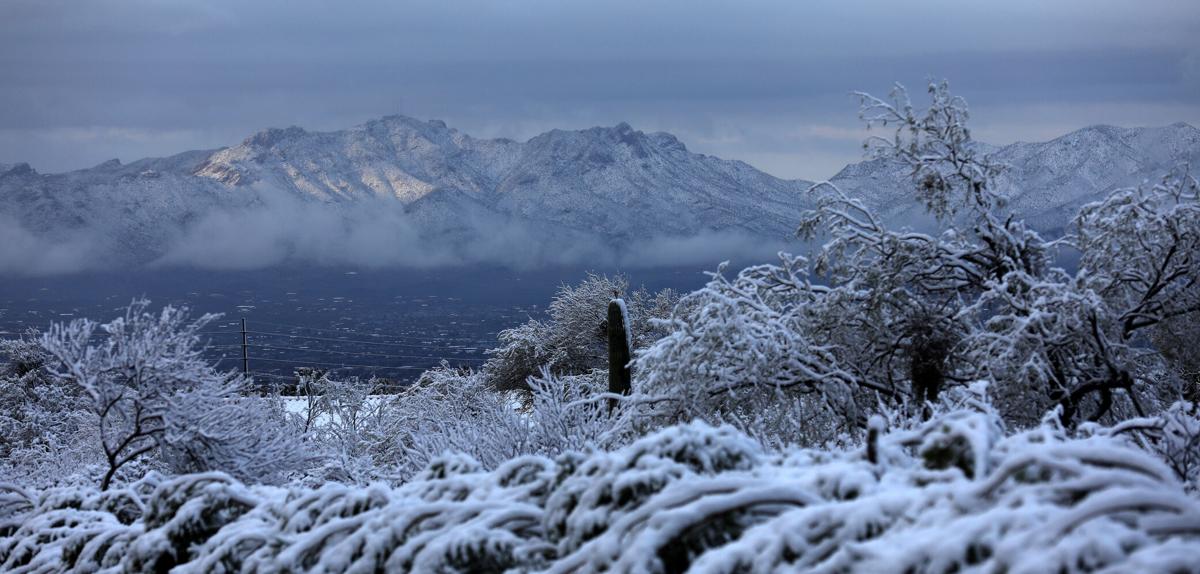Thanks to the four mountain ranges surrounding our beautiful city, the Tucson area has a variety of microclimates. These microclimates affect the plants that you can grow in your yard.
For example, if you’re located in Patagonia, you’re at over 4,000 feet in elevation, compared to around 2,500 feet in Tucson. Tucson also exhibits the effect of the urban heat island which more rural areas don’t experience. This changes your gardening zone. Tucson is considered to be Zone 9b (USDA) or Sunset Zone 12. Sierra Vista, on the other hand, is USDA Zone 8b and Sunset Zone 10. If your garden is at a higher elevation, check out the tips below to figure out what to grow.
How to figure out your microclimate
1. Figure out your growing zone. Your USDA growing zone can be found by putting in your zip code and the site will tell you your zone. You can also download various maps of your area from the site. Keep in mind that the USDA growing zones are based only on temperatures. Thus they do not take into account other important factors such as humidity, rainfall, length of growing season, and the like. The Sunset Zones do take all of that into account so check out the Arizona Sunset Zone map. For more detailed information check out the University of Arizona Extension’s publication titled “Arizona Climate Zones and their Application to Growing Plants.”
2. Check the sun and wind in your yard. Shade and sun are critical to the temperatures your yard and plants experience. Wind is important, too, particularly if you are in a mountainous area that can funnel winds through your property. Wind stresses plants because it can dry them out; it also can damage leaves and branches. You can read more about microclimates in my previous article.
3. Get a maximum/minimum outdoor thermometer (like this one). These are inexpensive and usually come with three or four sensors which you can place around your yard to monitor the temperature. After a year, you will have a good idea of the maximum and minimum temperatures in different areas of your garden, which is critical for figuring out what plants can survive there.
Tips for choosing plants for cooler areas
1. Look at native plants in your area that grow naturally. These will act as a guide to help you choose plants that thrive. Similarly, check out your neighbors’ gardens to see what does well.
2. Consider plants from the Chihuahuan Desert. This desert is next door to our Sonoran Desert, and their ecosystems blend into each other. The Chihuahuan Desert tends to be colder, because much of it is at higher elevations. Some plants from there, such as Texas Ranger (Leucophyllum spp.),do well in cooler climates in Arizona. You can also check out the plant list in the University of Arizona publication mentioned above, “Arizona Climate Zones and their Application to Growing Plants.”
3. Pay attention to plant zones listed on labels. Make sure that the plant you buy has been proven to survive at the temperatures in your zone. Generally, the USDA zone is listed on most plants, but remember that this does not take rainfall, humidity, heat and other critical factors into account. When in doubt, go with a native plant.
4. Avoid near-tropical plants like citrus and plants native to Mexico. For the most part, these will be unable to grow in higher elevations due to the temperature extremes. As always, though, a microclimate unique to your yard can facilitate growing plants outside of your zone. For example, a south-facing sunny yard which collects heat during the day can help with cold temperatures in the winter. That same yard may be blisteringly hot in the summer though, so consider the microclimates in your space in all seasons before planting. You can also consider a greenhouse if you want to grow tropical or other tender plants.
Watch now: These beautiful native plants will be a great addition to your Tucson garden. Video by Dominika Heusinkveld/Arizona Daily Star.





